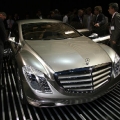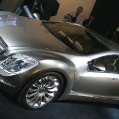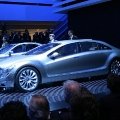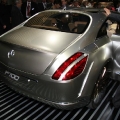Four-door convertibles are exotic machines that belong to a genre that time has more or less forgotten about. The most popular vehicle in this class was the Lincoln Continental from the 1960s, which, aside from being elegantly simple in its design, gained its notoriety as being the JFK car.
Not too long ago, American coachwork company ASC brought the idea back to life when it converted a Chrysler 300C into a soft-top convertible called the Helios. Despite positive critical acclaim and many enthusiasts urging the brand to consider production, nothing has yet to happen. Two years on, Mercedes-Benz has decided to give the four-door convertible a go with its brand new Ocean Drive Concept, which will debut at this year’s North American International Auto Show.
Named after a wealthy stretch of coastal road in California, the OceanDrive is full of daydream-worthy connotations. It’s exactly the place where you’d want to be spending time behind the wheel (or, perhaps lounging in back) of this elegant vehicle. Those rear doors also serve a very useful purpose, removing the rather inelegant maneuvers of getting into the back of a regular two-door convertible.
There’s no more flipping the front seat forward, and fumbling with the front seatbelt. Just open the door, step in, and recline.
Allowing drivers and passengers to focus on the world around rather than on thecar is Mercedes-Benz’s top-notch engineering. One of the biggest problems with convertibles – especially pillarless four-door convertibles – is that they tend to be weak in the middle. Take that Continental Convertible for instance; if all four of its doors were opened at the same time, the whole vehicle would actually sag, bending at the center.
Mercedes-Benz’s engineers wouldn’t be caught dead letting a vehicle with such flimsy characteristics wear the three-pointed star, therefore they’ve stiffened its undersides so it can stand strongly on its own, even with all four doors opened. Certainly, it didn’t help that the Lincoln had rear-hinged “suicide” doors, whereas the Ocean Drive has standard opening doors. Aside from that issue, there are other reasons why the Ocean Drive has a much stronger chassis; it prevents it from creaking and bending while on the move, and ensures that the car will remain intact in the event of a crash.
Flying in the face of the latest trends it helped to initiate with its SL andSLK roadsters, Mercedes chose not to use a retractable hardtop but instead opted for a cloth top when covering the Ocean Drive’s interior, just like on the CLK-Class convertible. They say that it’s present for the purpose of looking graceful while in motion, which is the same reason provided by Bentley for its Continental GTC convertible. Really, though, I think that it has more to do with design and style, two elements of the jewel-like car that could not be compromised.
With the exception of Mercedes’ own two-seat folding hardtop convertibles, the rest of the industry’s attempts at making a multi-tasking convertible roof end up somewhat odd looking. Their decklids are too square or too high, and to accommodate the folding mechanism the roofs tend to look funny in that they’re too curved and unnaturally proportioned.
Even with all the money in the world and the best designers for this one-off concept car, I still struggle to believe that Benz could have accomplished what all the other automakers have yet to do when it comes to producing an attractive retractable luxury sedan.
Source – Autoworld






Leave a Reply